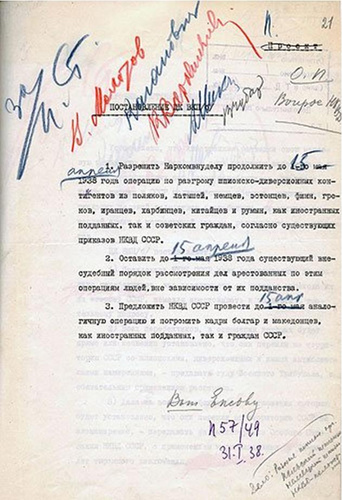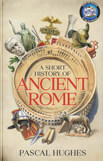Noiser
Joseph Stalin's Path to Power
Play Real Dictators Joseph Stalin Part 1: The Young Bank Robber
In 1924, Joseph Stalin rose to power in the Soviet Union. In the annals of history, few figures loom as large or evoke as much controversy. Some revere him as a champion of socialism, while others revile him as a tyrant whose authoritarian rule led to untold suffering.
Early life
Iosif Dzhugashvili, the man who would become Joseph Stalin, was born in Georgia in 1878. His father was a raging alcoholic who regularly beat the family and was eventually evicted from the village for assaulting a police officer, though he did return when Iosif was twelve to kidnap him. Iosif escaped, thanks to the intervention of some local priests.
A Political Spark
Stalin’s mother dreamed of her son becoming a priest, and he even attended seminary. Though he excelled in his studies, Stalin soon developed other interests. He began reading Marx and Darwin and started losing faith in God. At age 20, he abandoned the seminary and set out into the world to find other like-minded people.
Soon, he became a full-time political activist in the Georgian Marxist movement, an illegal organisation. Full of idealism, Stalin adopted the codename ‘Koba’ after a Georgian Robin Hood and began to organise industrial workers to destabilise the Tsarist regime.

Stalin headed workers’ meetings all over Georgia, fiercely debating with rivals over the party's future direction. He edited a Marxist newspaper called Proletarian Struggle and established Bolshevik strongholds in mining towns and industrial areas. He also formed local ‘Battle Squads’, using gangs to violently disrupt meetings of the liberal bourgeoisie.
In November 1905, Stalin was elected by his fellow Georgian communists to represent them at a Bolshevik conference in Petrograd. Here, he met the great leader, Vladimir Lenin—the man Stalin considered the 'mountain eagle’ of the revolution. It was the beginning of an association that would shape modern Russia.
Becoming the ‘Man of Steel’
Recognising Stalin's hard work, Lenin invited him to serve on the Central Committee of the Bolshevik Party. It was a big promotion, one befitting of a rebrand. This was when the man born and raised as Iosif Dzhugashvili formally changed his name. For the first time, officially, he became Joseph Stalin (Stalin means ‘steel’ in Russian).
The Bolsheviks seized power in Russia in 1917. Lenin was now in charge of the country. Five years later, a massive stroke left Lenin paralysed. With the leader’s days seemingly numbered, the manoeuvring to succeed him began. When he died in January 1924, Stalin took over.

Reforms
As soon as he rose to power, Stalin began introducing reforms. These were a series of brutal policies aimed at rapidly transforming the Soviet Union into an industrial powerhouse through forced collectivisation. By 1930, agriculture across Russia had been brought under state control at a terrible cost. An estimated ten million people were victims of Stalin's policies: evicted from their homes, deported to Siberia, executed, or left to perish in the harsh Russian winter. Propaganda films portrayed Stalin’s state-run farms as a triumph. But the truth was the polar opposite. It didn’t take long for agricultural production to collapse. Famine erupted across the Soviet Union. Stalin knew that his power relied not on the consent of his people but on the perception that he was an unmovable, hard man. He continued with his plan, ignoring the mounting death toll.
The Great Purge
The Great Purge was a political campaign dreamed up by Stalin. Simply put, he planned on eliminating members of his own party who he considered a threat. It started in 1934 with one of Stalin’s loyal supporters, Sergei Kirov. Stalin had him killed and then used the subsequent investigation to point the finger at dissenters. Thanks to shadowy threats to the accused families, those on trial simply admitted to their part in Kirov’s killing. Stalin had them executed. His plan worked perfectly. This brutal clear-out included more than half of the army’s top officers.

The Great Terror
With ‘The Great Purge’, Stalin eliminated opposition within his circle of advisors and the Communist Party. But as his paranoia grew, he decided to apply the same policy on a much broader scale across the Soviet Union through a campaign known as 'The Great Terror.’ In 1937, Stalin unleashed his dreaded secret police, the NKVD. These predecessors of the KGB were given the job of cleansing the country of anyone who fit Stalin’s definition of a traitor. Their methods were ruthlessly methodical:
Bolsheviks did everything by industrial quotas. So they said in such and such a town, 100000 people should be arrested and deported to Siberia. 50000 people should be put in prison, and 20000 people should be executed. Who these people were were to be decided by whoever was in charge.
Simon Sebag Montefiore, historian and author of the books Young Stalin and The Court of the Red Tsar
During the ‘Great Terror’, at least 700,000 people were executed.
Hitler: The Rise of an Enemy
Stalin may have been more secure than ever at home, but outside the Soviet Union, a new enemy was rising—Adolf Hitler. Hitler rose to power in Germany on the crest of a wave of violent populism. As well as the Jews and the disabled, Hitler was hell-bent on wiping out the communists. He foresaw a monumental showdown between Fascist Germany and Marxist Russia. But to the surprise of many in the West, in 1939, Stalin announced he had cut a deal with Hitler. Between them, they would carve up Eastern Europe and not attack each other.
Stalin believed Hitler would not attack the Soviet Union. No one has been able to divine why because Stalin didn't trust anyone. Even when he was given evidence that Hitler was going to attack, he refused to believe it.
Dr Martin McCauley, University of London, Russia analyst for the Limehouse Group
However, on June 22, 1941, Hitler went back on the deal and invaded Russia. In the first week alone, the Germans captured over 100,000 men.
Stalin was dumbfounded. Overwhelmed by a crisis of confidence, he retreated to his dacha, isolating himself from the world. His officials, hesitant to disturb him, eventually mustered the courage to intervene. He returned to the Kremlin just as the tide began to turn. The Soviet army slowly pushed the Nazis back, mile by mile, through Eastern Europe. Finally, on May 2nd, 1945, Russian troops overwhelmed Berlin.
Stalin’s Legacy and Death
In the aftermath of World War II, Stalin's actions set the stage for the Cold War. He refused to withdraw Soviet forces from Eastern Europe, instead installing communist governments in occupied countries. This strategy led to the creation of the Eastern Bloc and extended to supporting communist movements globally.

On March 1, 1953, Stalin was found unconscious in his dacha near Moscow, having suffered a cerebral haemorrhage. The "Doctors' Plot" conspiracy, which had led to the recent dismissal of many physicians, exacerbated his condition. Stalin died on March 5, 1953, at the age of 74, marking the end of an era of personal dictatorship in the Soviet Union, though the system he built would continue to influence global politics for decades.
Stalin was an evil man, but he was also one of the most successful rulers Russia ever had. This extraordinary character is both one of the most successful and one of the most appalling.
Simon Sebag Montefiore, historian and author of the books Young Stalin and The Court of the Red Tsar
